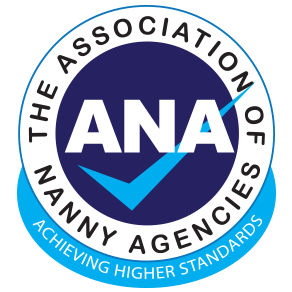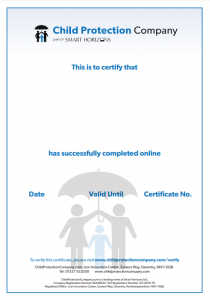Safeguarding for Nannies
Our online Safeguarding for Nannies course has been specifically written for the sector. The course covers essential topics such as legislation, online safety, anti-radicalisation, indicators of abuse and neglect and how to report concerns.



£30.00 + VAT
Bulk Buy Discounts
10+ courses - Save 10%
20+ courses - Save 15%
50+ courses - Save 20%
75+ courses - Save 25%
100+ courses - Save 30%
Volume discount applied at checkout
Key Features

Safeguarding for Nannies Course Content
This Safeguarding for Nannies online course is designed to meet the child protection and safeguarding training requirements for nannies and au pairs, which is laid out in the statutory guidance for the safeguarding and promotion of welfare for children.
There are regional variants of the course, written to meet the specific needs of learners in Scotland and Wales.
On completion of this course, you will be able to:
- Relate to the range of legislation and guidance surrounding safeguarding and the protection of children and young people
- Demonstrate an understanding of statutory and non-statutory roles in protecting children
- Describe your own role and responsibilities in relation to safeguarding and child protection
- Define the different types of child abuse and the associated indicators
- Demonstrate an understanding of the main online safety risks
- Recognise and identify vulnerabilities to radicalisation
- Ensure that good practice with regards to safeguarding and child protection is embedded within your working practices
- Be able to deal with safeguarding concerns and referrals
- Ensure access to adequate advice, support, information, instruction and training for yourself
- Be able to respond to allegations and complaints
Every day in the United Kingdom, many thousands of children are placed in the care of nannies, au pairs, babysitters and other home based childcarers. It is no wonder that the agencies who protect our children see you as vital in the process of safeguarding.
Sadly, child abuse and child sexual exploitation are an all too common occurrence. By the end of the module, you will have an increased awareness of the importance of the role childcarers can play in the safeguarding of vulnerable children by spotting the early signs of abuse and neglect.
This module will introduce you to the terminology of safeguarding, and will define key words and concepts that will inform the rest of the course.
By the end of the module, you will have an increased awareness of the definitions of key terms such as ‘child’ and ‘safeguarding’. You will also be more familiar with the legislation and guidance that applies to your role.
Due to the frequency of contact with a child, you are in a unique position to identify and raise concerns about potential issues regarding their welfare. This module will give you an overview of your safeguarding responsibilities
To effectively detect, reduce and hopefully prevent child abuse, we need to strictly define what it is and how it manifests itself. Understanding the categories of abuse will help you to recognise the tell-tale signs that it is taking place.
At the end of this module, you will have a better understanding of what we mean by child abuse and what the specific areas of abuse are.
The increased use of technology by young people and children brings many benefits and, unfortunately, a few dangers. This module looks at the role of safeguarding when it comes to online safety. The content will give you an overview of the potential for risk when children are online in relation to, amongst other areas, grooming, sexting and cyberbullying. The module will remind you of the legal position should you become aware of an incident, and will outline ways of empowering children to be safe and report issues when online.
By the end of the module, you will have extended your knowledge of the risks associated with technology, the different aspects of online safeguarding, specific risks children may be exposed to, and effective online safety practice.
All childcarers have a legal duty to prevent children from being drawn into extremism. You are expected to challenge extremist ideas and recognise when children are at risk.
This module places the Prevent strategy into context and considers the ways in which radicalisation can affect a young person and the groups that may attempt to induct a young person into their ideology.
By the end of the module, you will have a greater understanding of the signs of radicalisation in young people and what to do should you feel a child or young person is in danger from extremist ideology.
The focus when working on safeguarding or dealing potential abuse must be the safety of the child or young person. Remaining child-centred is key to the process of identification and reporting, because sadly, children sometimes report several times before any action is taken. The learning you will complete in this module is contextualised in a realistic situation, so that you can see how a child focus can be achieved.
By the end of this module, you will have a better understanding of what it means to be child-centred in your approach and the responsibilities of childcarers in relation to documenting decisions.
This part of the course builds on the work we did in earlier modules. Children can disclose in a number of ways, so, while you should maintain confidentiality where appropriate, you also need to know when to report and to whom. It is vital that you respond quickly and appropriately when presented with a disclosure of abuse, and this module covers the right process to follow and what to do (and what not to do) in order to achieve the desired outcome.
By the end of this module, you will have a better understanding of the correct procedures to follow in response to a potential abuse situation and will know what to do if you have concerns about the behaviour of an adult.
This module will look at the process in place should a child potentially be considered ‘in need’ in some way. All agencies work together to protect children using local and national guidelines to define common practice.
At the end of this module, you will have a better understanding of some of the statutory assessments and child protection procedures in place in your region of the UK.
The importance of recording and the early sharing of information cannot be overstated. Cases of abuse and neglect could be resolved and help provided much faster if all agencies were to alert and report incidents as soon as possible. It is also important that you record any particular incidents or potential issues as soon as they come to light because, should a child protection case develop, your evidence and reports will be key to finding a speedy resolution to support the wellbeing of the child.
By the end of this module, you will have a better understanding of best practice when recording and sharing important safeguarding information.
Your experience and your training should now mean that you will be clear and confident in your role within the safeguarding process, and this will form the basis of your ability to interact with other agencies. In this module, you will look at the agencies who work towards child protection and some of the tools that they use to help safeguard our children. Collectively, the agencies in your area will work with the Local Safeguarding Children Board (LSCB)/Safeguarding Partners, or Child Protection Committee (CPC) to ensure policy is followed.
By the end of this module, you will have a better understanding of how to work with agencies to safeguard children.
The unique nature of the home based childcarers, which often involves working alone in a home environment, can put you at risk of allegations and complaints.
This module provides guidance about best practice.
You will now take all that you have learned and apply it to an assessment of your knowledge. The final assessment is your opportunity to show how much you have absorbed, and why it is so important to have child protection training.
Once you have passed your assessment you will be able to download your certificate. Your pass rate will be 70% but don’t worry if you do not pass the first time, as you can take the test multiple times.
Customers Trust Us
"This was a well laid out and informative online course. I liked the recap questions as we progressed along. Would highly recommend this course."
Tracey Griffiths
"This course was short but very informative and very helpful."
Arlete Spratt
Details / Benefits
- Instant access to courses
- Takes between 1-2 hours to complete
- Courses can be taken 24/7 online or on mobile devices
- Less expensive than face-to-face training
- No need to take time out of work to undertake training
- Essentially 3 courses in 1, covering all major safeguarding requirements
- Retrieve centrally held online certificates at the touch of a button
- Individual, personalised certificates can be downloaded and printed
- Automated reminders when training is due for renewal
- Courses can be stopped and restarted at any point
- Course notes and resources available for the duration of certification
- Friendly, UK-based customer support centre in case you have any queries
- Downloadable Excel reports for organisations to monitor everyone's progress
- Regularly updated to meet legislation changes
- Regional variants available for England, Scotland and Wales
- Provides information, scenarios and downloads specific to nannies and au pairs
Safeguarding for Nannies FAQ
Yes, the course contains detailed modules on recognising signs of abuse and neglect and reporting concerns. It addresses the unique issues that arise from being a lone worker.
Our Safeguarding for Nannies course has separate modules on anti-radicalisation and the Prevent duty, as well as online safety, which fulfils the safeguarding outcomes as specified by Ofsted. It is essentially three courses in one, saving you both time and money.
The safeguarding levels no longer apply to child carers, however the content of this online Safeguarding for Nannies course equates to the old Level 2 standards.
Why use our Learning Management System?

Call us today at 01327 552030!
Or, alternatively:
